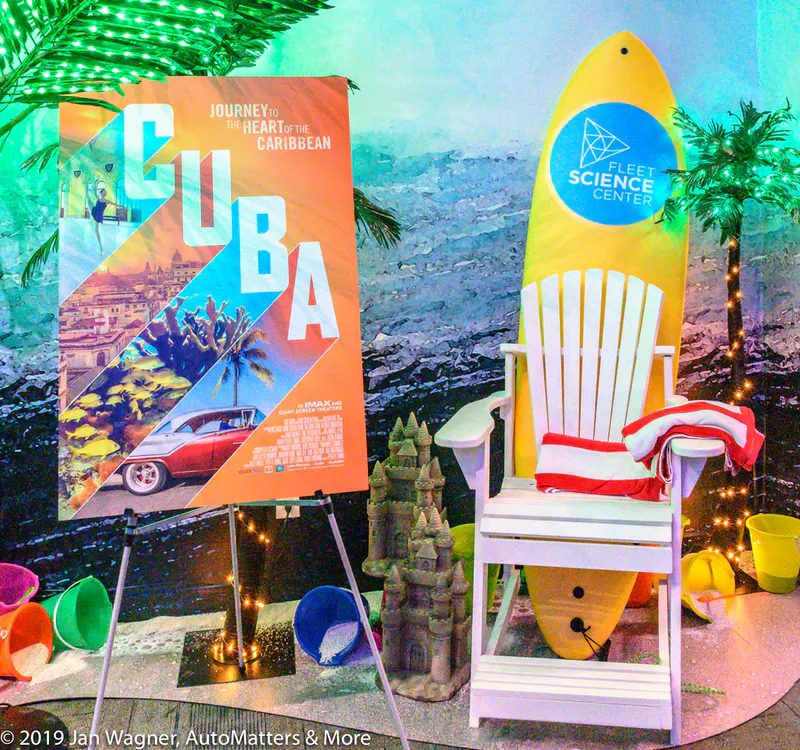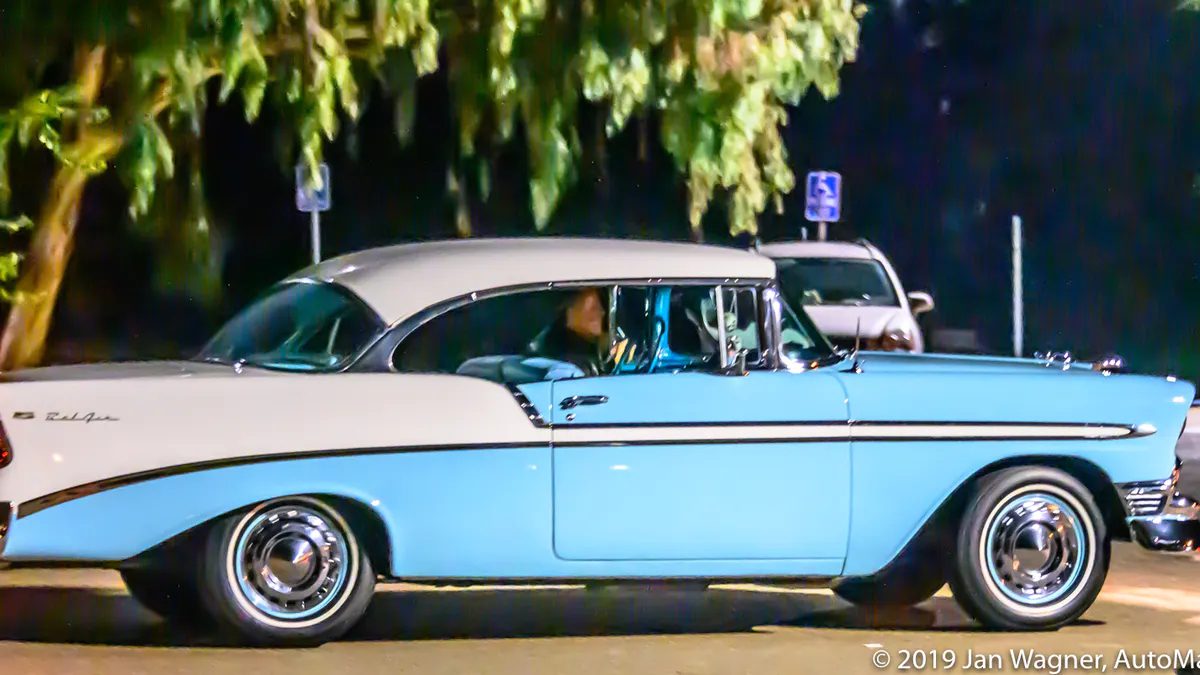
TRAVEL BACK TO 50S HAVANA WITH “CUBA: JOURNEY TO THE HEART OF THE CARIBBEAN”
The cars, natural beauty, music & dance — in IMAX
As we gathered at the Fleet Science Center in Balboa Park for the San Diego premiere of “CUBA: Journey to the Heart of the Caribbean,” we were entertained with live music and dancers. The dancers invited us to join them to form a traditional Cuban conga line.

We learned in the introduction to the film that Cuba “is a place living in three eras at the same time: the past lingers, the present goes on, the future beckons. At its heart, a people unique and diverse. Spirited and creative, determined and inventive, each with a story to tell. … Once the gateway to the New World, it is a place of dramatic history. Gold, silver and resources flowed through Havana – the richest city and largest port in the Caribbean for 300 years.”

In some ways, a visit to Cuba is like taking a trip back in time to the 1950s, with big, beautiful, pre-Cuban embargo American sedans cruising the boulevards of Havana. Through ingenuity and sheer determination, Cubans have somehow kept them running all these years, adapting different parts for them and making do with whatever they have.
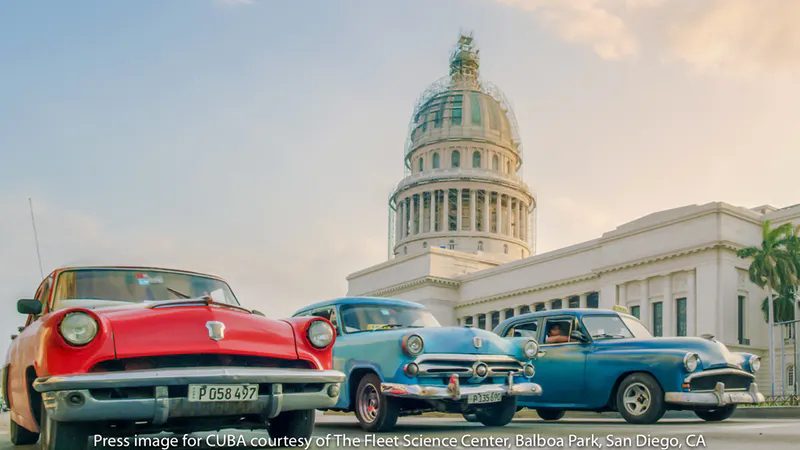
The pace of life here seems slower, giving visitors and residents alike the time to enjoy the simple pleasures of life: a delicious meal with family and friends, playing chess at an open air table on the sidewalk, and music and dancing on the streets.

Such is the lifestyle and culture that is portrayed in the IMAX film “CUBA” Journey to the Heart of the Caribbean,” now playing at The Fleet Science Center in San Diego’s Balboa Park and in worldwide distribution to other museum cinemas.

This film is much more than that. It explores the relationship between sustainable agriculture and the remarkable condition, beauty and abundant marine life of the island’s coral reefs, and how they have miraculously recovered after suffering the fate of coral reefs around the world. Scientists show us that there is an important lesson to be learned here. It concerns the discovery by scientists of the damaging effects to the coral caused by long-term runoff for years, while agricultural chemicals were supplied from Russia – a condition that was reversed when the Russians left and Cuba had to revert to their traditional, time-honored organic means of agriculture from long ago.

This IMAX film, as projected on the giant dome of the Eugene Heikoff and Marilyn Jacobs Heikoff Theater, brings the breathtaking beauty of this island paradise to life.
In some ways Cuba seems frozen in time, but the opening of its society is inevitably bringing dramatic changes of modernization.
You will see and learn about the restoration of the island’s ornate colonial architecture from Eusebio Leal, the City Historian of Havana. From his bold and successful efforts as a young man to save a historical site, he has gone on to become renowned for his successful efforts to renovate and restore the historical UNESCO world heritage site of Old Havana. We learn of his innovative efforts to raise the funds needed to do so by using the profits from a number of hotels and restaurants.

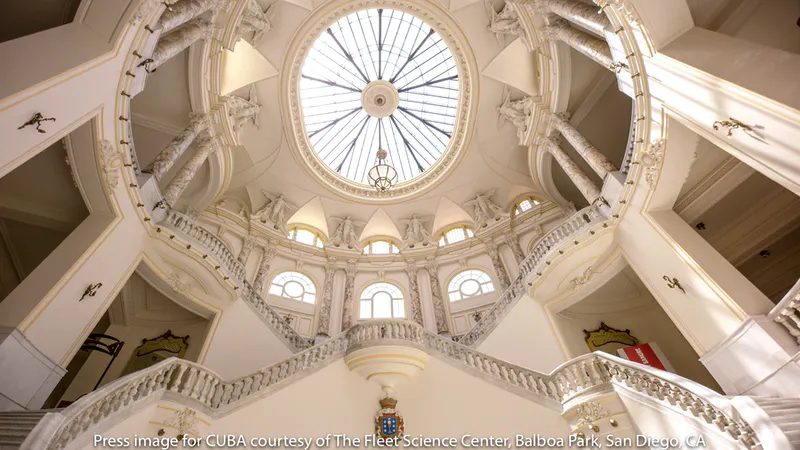
We venture under the surface of the ocean on dives with marine biologists Fernando Bretos and Dr. Daria Siciliano to see the abundant life of Cuba’s coral reefs. The time lapse photography, speeded up, shows us in exquisite detail that apparently rock-like and static coral is actually living and moving.
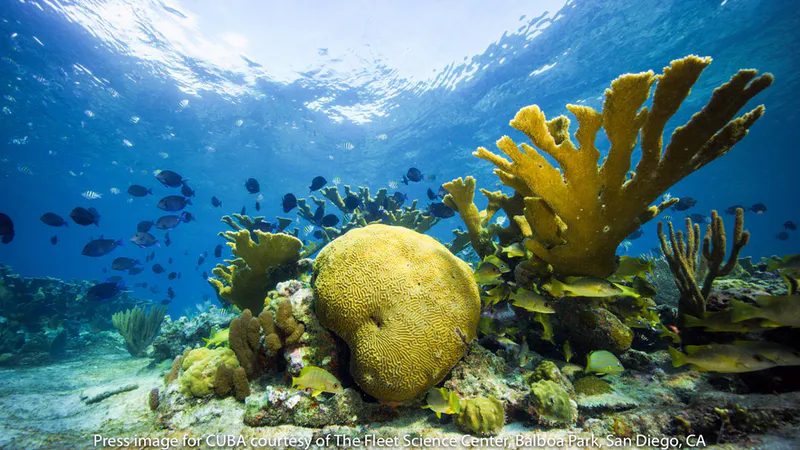
We follow the aspiring career of a young ballet dancer – Patricia Torres – a student at the prestigious National Ballet School of Cuba. Her graceful dancing is seen juxtaposed between the school and on the beach near her home. Someday she hopes to perform in front of audiences around the world as a professional ballerina in the world-renowned Cuban Ballet Company.

Much of Cuba, which is by far the largest island in the Caribbean, remains undeveloped and pristine, with abundant, lush vegetation in its natural, unspoiled state, and yet Cuba is only 90 miles away from the United States.
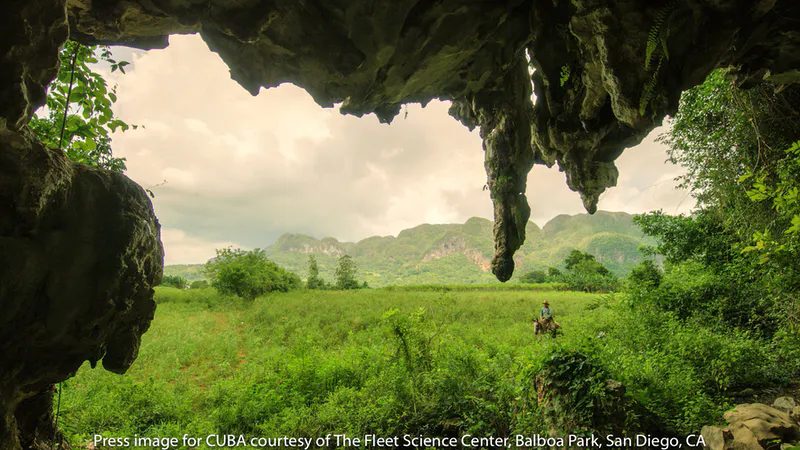
For more information about “CUBA: Journey to the Heart of the Caribbean,” showtimes at The Fleet Science Center in San Diego and to watch the trailer, visit www.rhfleet.org/shows/cuba.
COPYRIGHT © 2019 BY JAN WAGNER – AUTOMATTERS & MORE #617


